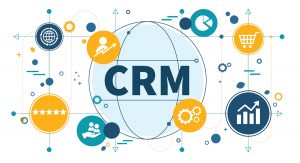In many companies, the customer relationship management (CRM) system is primarily seen as a sales tool. Tracking leads and customer interactions is, of course, valuable in its own right, but CRM systems can do much more. By extending access to other departments, businesses can gain a more comprehensive view of their customer relationships and increase the value of their CRM investment.
Let’s look at how different departments can use CRM systems to improve both their work and the overall customer experience.

Engineering and technical teams: product insights
Engineering and technical teams can gain valuable insights from CRM data that help improve products and solutions. When engineers have access to the CRM, they can see patterns in customer requests, common technical challenges and recurring specifications. This insight helps them prioritise product improvements based on actual customer needs rather than assumptions.
For example, if several customers want similar customisations, your development team can identify this trend and potentially build these features into standard products. Without CRM access, engineers may miss these patterns entirely and continue to treat each request as a one-off customisation.
With CRM access, engineers can track recurring modification requests to identify trends – whether it’s demand for more durable or temperature-resistant materials, increased efficiency, or recurring problems with a particular type of product. Custom fields can be used to categorise modification requests by function, material type, or performance requirements, while tags such as “frequent upgrade request” can highlight recurring patterns, making trend analysis easier.
Many CRM systems also allow you to link technical documentation directly to the customer data records. So if a similar technical challenge arises with a new customer, your team can quickly fall back on previous solutions instead of starting from scratch each time.
Customer service: complete customer context
While customer service teams are increasingly using CRM systems, they often work with limited information or in systems that are disconnected from other departments. When customer service representatives have full CRM access and integration, they can see the full context of each customer relationship – current orders, past issues, conversations with sales and special arrangements.
This transparency eliminates the frequent customer complaint of having to explain their situation multiple times to different people. For technical products often sold through distributors or OEM partnerships, this is particularly valuable. A CRM ensures that when a distributor calls about an issue, customer service can immediately access past orders, warranty claims, and technical documentation instead of checking with sales or production teams.
For example, if a distributor requests a faster lead time on a specific component, the CRM can show whether similar requests have been accommodated before and who approved them – ensuring quick, consistent decision-making without delays or inconsistencies. This not only improves efficiency but also significantly enhances the customer experience.
Service teams can also document resolutions directly in the CRM, creating a knowledge base of solutions that helps everyone handle similar issues more effectively in the future. Over time, this documentation helps identify product or process weaknesses that need attention.
Production and operations: better planning
Production and operations teams can use CRM data to anticipate needs and improve planning. By accessing the sales pipeline, production managers can see what’s coming their way even before orders are finalised, allowing them to plan capacity and materials more effectively.
Manufacturing companies often struggle with demand fluctuations, custom orders, and material shortages. A CRM integrated with inventory or ERP systems allows production managers to check critical questions:
- Which custom orders are pending?
- Are there trends in repeat orders that indicate a need for pre-production?
- Do we have stock issues that could affect delivery promises?
For example, if a sales rep enters a high-volume order for a specific technical component, the CRM can automatically trigger an inventory check or notify procurement – preventing last-minute production bottlenecks.
The CRM can also help track special requirements for different customers – such as customised packaging, specific delivery dates or quality documentation requirements. Having this information readily available helps prevent last-minute rushes and ensures customer expectations are met consistently.
Some CRMs also allow automated alerts for large incoming orders, triggering a procurement notification if stock falls below a certain threshold. Pipeline dashboards can give operations teams a clearer view of potential spikes in demand. For businesses that integrate their CRM with ERP, inventory management, or procurement systems, these capabilities become even more powerful, enabling seamless communication between sales and operations teams. While some of these features require integrations or additional tools, even a well-maintained standalone CRM can provide critical planning insights.
Remember, the true value of a CRM comes from having a complete overview of your customer relationships. When information flows between departments, everyone involved can make better decisions, provide better service and ultimately create more value for your customers.
